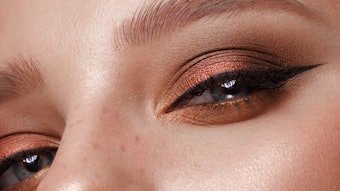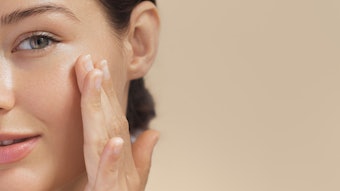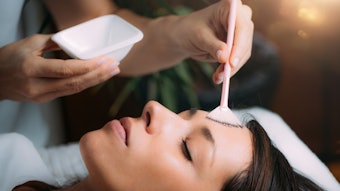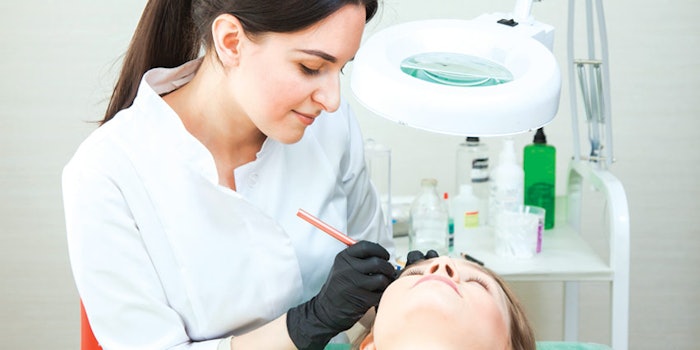
Microblading is the buzzword in the beauty industry, with clients all over the country showing interest in this treatment. When searching the term online, a host of online videos can make the procedure look easy to learn. However, it is anything but, especially in the beginning. There are numerous variables that have to be considered, and it takes months to learn the proper techniques. To acquire the right skills to master microblading, you must first be trained by a reputable institution and by those experienced in the craft. This article will discuss the tools needed to master microblading, but first, let’s address hair and brow loss.
Hair Loss
Of course the client who has gone too far with waxing, plucking and threading will be interested in microblading. However, those with hair loss will also be interested in the treatment. Hair loss is not an issue just experienced with age or gender, and it may even have nothing to do with how the client cared for their brows. Most people think of cancer when they hear hair loss, but hair loss can also occur with thyroid problems and hormonal conditions. In addition, high blood pressure medication and antidepressants have hair loss as one of their long-term side effects. Alopecia areata is an autoimmune disease where the body’s immune system attacks hair follicles on the body, causing patches of hair loss. It can cause brow loss, and it can also affect children.
Education
If you are thinking about adding microblading to your menu, there are a few things you should address. The first of those is education, as the right education is critical in providing quality service. Standards and regulations vary from state-to-state, with some states requiring a myriad of licenses and other states needing much less. There are many courses available that vary in curriculum, length, instructor credentials, certification, experience and number of students per class. Always remember to visit the training facility prior to enrolling. The below criteria can be used when choosing microblading education.
Website. Their website should address not only their certification but also their practical experience. They should provide photos of their work. There should also be testimonials from former students.
Individual instruction. One-on-one training with a qualified educator and artist is vital. Find a small, more intimate setting where you will experience one-on-one attention. Also, look for continual interaction with your instructors and help with your practical work.
Instructor/artist. Find an instructor that is also a practitioner, meaning they also work behind the chair. They will give you more realistic, every day advice and experience.
Qualified trainer. Inquire about the educator’s experience, where they were trained, how long they have been training and what certifications they hold.
Hands-on. Make sure you find education that has hands-on experience with live models.
Hours. It is the position of the Society of Permanent Cosmetic Professionals (SPCP) that technicians should have a minimum of 100 hours for any fundamental program. Make sure to choose a facility that offers you the 100-hour training to qualify for SPCP.
Sanitation. Be sure to select training where the educator understands and can assist you in meeting the sanitation and health requirements set forth by local and state agencies.
Models. Find education where you get to work with more than one model.
Kit. If a kit comes with the class, what are the contents of the kit? How many procedures will the kit do? What’s the quality of the products in the kit? Is the trainer trying to sell you products they manufacture or are they using the best products possible?
Location. When looking for a facility to train in, it is recommended the student seek out a brick and mortar establishment. For the kind of money the student is paying for the class, they do not deserve an instructor that flies into town for the weekend to teach a class in a hotel conference room or a leased spa. The student deserves a place they can revisit if possible.
Repeat. Does the student have the ability to return and retake part or all of the class if they desire? Do they offer options for the student to return with models and practice? Do they offer critique of their work by sending in pictures? Is there a protocol established for contact with the trainers after the class is completed?
Marketing. Find education where a portion of the training is devoted to helping the student understand how to market this new service. Technicians will need to know how to attract new clients, market to existing clients, develop a pricing strategy and use marketing platforms such as social media, local advertising, charity work, etc.
Start Immediately
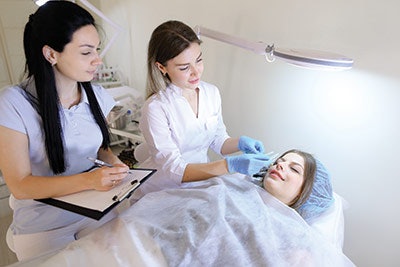
Once a student completes training, they oftentimes feel alone, isolated and fearful of now going off and practicing on their own. Ongoing communication is vital for their success, but the effort must first come from the student. This shows just how committed they are to mastering their craft.
This procedure takes patience, commitment and diligence. If a student leaves the training and doesn’t immediately continue practicing, whether it is on live models or practicing on silicone pads, she will not progress. It is suggested that once a student leaves training, they lose 20-35% of what they were taught for every week they do not practice. Therefore, all of the training could be for nothing if they do not start practicing after one month.
Tools
So, you’ve completed training and are ready to start microblading. Acquire the following tools and be well on your way to making money with permanent cosmetics.
Manual. A manual that you can reference can be indispensable until you are comfortable with all aspects of the procedure.
Quality pigments. Make sure to have these designed specifically for microblading. All pigments are not created equal, and the microblading procedure demands certain color tones to help the color remain stable and not discolor or gray.
Quality needles. Microblading needles run the spectrum of a full disposable microblading pen to needles of various sizes that are dropped into a needle base. The microblading artist needs a variety of needles at their disposal to meet all clients’ needs. There are many reputable companies that make high quality needles and pens, and they all should clearly show how they have been sterilized and individually packaged with the proper codes and documentation.
Numbing agents. These are necessary for the comfort of the client and the ease of the application for the artist. Good numbing agents will have 5% lidocaine.
Disposables. You want to be disposable as much as possible when it comes to microblading to leave nothing to chance for cross-contamination. Gowns, robes, masks, gloves, hats, cotton rounds, barrier tape and needles are just some of the items that should be disposable. Your training center should provide you with a list of items you will need and where you can purchase them.
Sanitation
The sanitation practices of microblading are extensive. You should be doing the service in an area that has been approved by your state health department. Each state has different rules and guidelines.
Disposing of needles should be done in a sharps container. Once filled, that container should be picked up by a company that disposes of such items. Companies like these are all over, and they cost anywhere from $250.00 to $450.00 per year. They supply you with a large container to dispose of your disposable items.
Your workstation must use barrier tape on everything that you can potentially touch and then wipe down with a disinfectant designed to kill bacteria and blood borne pathogens. Disposable covers on the bed are also necessary.
The artist and the client must be protected. The client should be covered properly with a disposable top and hat to catch any potential pigment or bodily fluid splatter. The artist should be gowned and covered from head to toe.
Plan a Strategy
Before announcing adding microblading to your menu, take the time to thoroughly analyze the market you will be serving. Check competition websites for quality of work, cost, features and benefits. Establish a strategic plan for building the business, through social media, local advertising, internet digital marketing, Google ad words and more. Know your competition, and make a plan to set your services apart.
The art and science of microblading, while popular, provides a solution to many suffering from extensive brow loss. Learning and performing the procedure is mutually rewarding for both the practitioner and client. Be selective in who, what and where you learn microblading.






